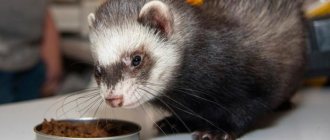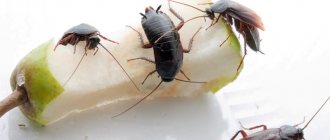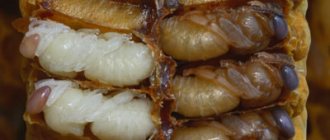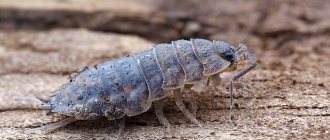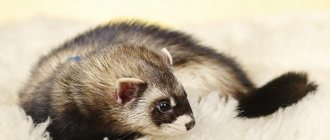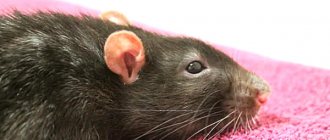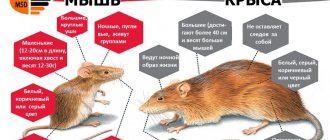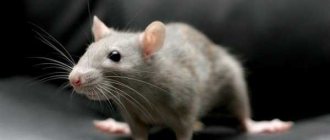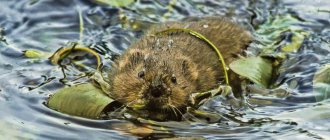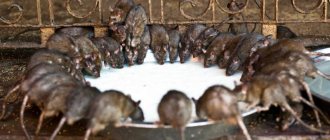Before you get a decorative pet rat, you need to study the list of foods that you can feed your rat. It is believed that rats are omnivores. Gardeners who often struggle with rodents are especially sure of this. Summer residents try in every way to kill rodents, often using poison for this. But the rats survive and continue to damage the furniture and chew up all the food they find.
But this is typical only for wild rats that live in the wild. The digestive system of domestic rats is much weaker than that of wild rats. Therefore, the owner must know what can be fed to the rat and what cannot be given to it.
What Do Pet Rats Eat?
The breeder’s task is to create the most comfortable conditions for the pet, and this applies not only to a clean cage. In particular, the rat's diet should be healthy and balanced. It is strictly not recommended to feed your pet rodent scraps from the human table.
Otherwise, the animal may develop pathologies of internal organs due to poor nutrition.
Daily diet
Below is a list of what rats should eat daily to stay healthy and active:
- any greens (cilantro, parsley, lettuce, grain sprouts, dill, etc.).
- Vegetables (turnips, cucumbers, cabbage, potatoes). For better digestibility, they should be boiled.
- Fruits and berries (mainly raspberries). Citrus fruits should be introduced gradually, monitoring the rodent's condition for allergies.
- Cereals (oatmeal, wheat, corn). For the cold season, it is worth adding millet and barley.
- Any nuts except almonds. It should be given in small quantities, monitoring the well-being of the rodent, or completely excluded from the diet.
- Dairy and fermented milk products (yogurt, kefir, cottage cheese, etc.).
- Specialized soy nutrition.
- Eggs. Chicken eggs should be replaced with quail eggs. Recommended frequency of use is no more than 1 time per week.
- Low-fat fish in any quantity.
- Boiled meat. Beef, pork or poultry are allowed. Instead, you can offer the rat low-fat boiled bones or cat food.
What do pet rats eat?
Important: you must remove the seeds from fruits yourself, as they contain cyanide, which has a detrimental effect on your pet.
The role of rare delicacies for rodents is assigned to the following products:
- low-fat milk and sour cream.
- Hard varieties of cheese.
- Sausages, ham.
- Sweets with a little sugar, crackers.
The daily basis for a decorative rat is grains and nuts, the quantity of which cannot be limited. The remaining products from the specified list are used additionally.
The volume of fruit and vegetable baits is up to 40 g. daily per rodent (or every other day). The share of animal products is 20 g. with a break of 3-4 days, and fermented milk - no more than 1 tbsp. l. in Week.
During illness
During the period of illness, rat food should remain approximately the same as before the onset of illness. It is worth strengthening the diet with foods that contain many active ingredients, which will normalize the condition while gently affecting the animal’s body.
Natural antibiotics for rodents:
- onion and garlic.
- Bananas.
- Eggplant.
- Plum, raspberry, strawberry, cranberry, prune.
- Yellow mustard.
Instead of water when sick, the best drink for rats is echinacea tea.
Ornamental rodents often develop arthritis and various neoplasms arise. To prevent the appearance of tumors, it is worth including broccoli in your animal’s diet. You can reduce your risk of arthritis by taking garlic and ginger every week.
During pregnancy and lactation
Pregnancy is a difficult time for all mammals and rodents are no exception. During this period, it is necessary to enrich the female’s diet with vitamins and microelements, reducing the consumption of substances harmful to the offspring.
Nutrition adjustments should be made based on what the rat likes to eat and the duration of its pregnancy.
| Gestational age | 10-14 days | After 2nd week |
| Diet | ||
| Can be eaten | Poultry (turkey, chicken), low-fat cartilage, fresh willow branches, apples. | Poultry (turkey, chicken), low-fat cartilage, fish, cottage cheese, apples, nettle leaves. |
| It is recommended to limit | Sprouted grains, broccoli, liver. | Lettuce, cucumbers, egg yolks. |
| Absolutely refuse | Bell peppers, tomatoes, onions and garlic. | Grapes, onions, raisins, garlic. |
A balanced diet during this period is especially important, because now the ornamental rodent feeds not only itself, but also future offspring.
Choosing food
The basis of a rat's diet is a grain mixture. You need to choose a trusted manufacturer who maintains balance when formulating feed. If you can’t find good ready-made food, it’s better to cook it yourself than to buy low-quality food, which consists of almost 80% oats. A complete diet should include oats, wheat, barley and rye.
It is better not to take food in a cardboard box, as it is stored in unsealed packaging, and if it was near chemicals, the rat can easily get poisoned. You only need to buy formulations in airtight packaging, and it is better to do this not in a regular supermarket, but in a specialized veterinary store.
You can buy not only grain mixture, but also granulated food. This food is similar in composition to regular grain food; it is purchased when the rat eats selectively, eating the most delicious food and leaving the grain untouched.
Peculiarities of nutrition of little rat pups
For the first month after birth, little rat pups feed on their mother’s milk, which after a while is replaced by the food that these animals are accustomed to. The participation of the breeder in the process is practically not required, since the female rodent instinctively knows how to raise babies.
If there are too many offspring, the rat does not have time to look after them all. Then the weakest and most helpless are eliminated through natural selection. For someone who knows what little rat pups eat, it will not be difficult to raise them.
At first, the main food for rat cubs is milk and its derivatives, which are high in vitamins, fats, and beneficial minerals. The best option is dog milk, which, in its absence, can be replaced with goat milk. In addition, small rat pups can be fed with special mixtures.
Important: the transition to artificial nutrition must be carried out smoothly, strictly following the attached instructions, which will prevent oversaturation. Before using the mixture, the water-alkaline balance in babies is restored by taking appropriate medications (for example, Regidron).
- For the first 14 days, feeding is carried out around the clock with a break of 2-3 hours. For 10 gr. weight, the baby needs 0.5 ml of the mixture, which must be prepared before each meal.
- Grown-up rat pups are fed less frequently - every 4 hours, adding low-fat cottage cheese and a little cereal flour to the mixture.
- From the 4th week, rodents can be switched to adult food, but this must be done gradually, without overloading the body.
The scheme for introducing food familiar to rats into the diet of babies is as follows:
- allow the cub to smell and lick new food. You can use a slice of fruit, a boiled egg or a steamed (boiled) vegetable.
- Replace one meal completely with the indicated products, after finely chopping them.
- The next step is to include grains in your diet.
- By the end of the first month of life, the mixture should be completely abandoned, replacing it with other products. However, the baby should be given fermented milk products once a day.
Please note: after taking the mixture, the baby must be given specialized medications to avoid intestinal disorders.
Diet composition
The basis of a domestic rat's diet is a grain mixture. It is better to choose a ready-made mixture than to create a menu yourself, adding ingredients in the correct percentage. Food can be given without restrictions; a rare rat will eat more than 30 g.
In addition to the grain mixture, it is necessary to add succulent feed to the diet. These are vegetables, herbs, fruits, salads. Protein should also be present in the diet. This is especially true during active growth, pregnancy or breastfeeding.
In addition, you can give your pet treats. These can be seeds, nuts, dried fruits. There should be a limited amount of treats in the diet; it is best to use them as rewards.
The diet looks something like this: grains (60%), vegetables and herbs (20%), meat and eggs (10%). The rest of the diet consists of fermented milk products and treats.
What do rats eat in the wild?
In the warm season, a wild rat has many options for what to eat in the wild:
- nuts and seeds.
- Bird eggs.
- Insects, worms, larvae.
- Baby fish and freshwater shellfish.
- Root vegetables, fruits, plant stems (moderately juicy).
If a rodent begins to hunt, then its prey becomes not only toads or lizards, but even small birds or small species of mammals.
With the onset of cold weather, rats have nothing to eat, because access to plant food is reduced to a minimum.
Then the rodents move closer to human habitation, feeding on leftover food from trash cans and small pets.
Poisonous grass
So, we figured out what rats eat. But you also need to have an idea of what is dangerous for them. Especially if your pet has the opportunity to move freely around the apartment, and you are a fan of home gardening. If he can only get potato, cherry, tobacco, and euphorbia leaves from your hands (that is, you just need to check that the animal does not eat them), then he can gnaw indoor flowers without your knowledge. The following house plants are poisonous to rats:
- dieffenbachia;
- indoor feces;
- azalea;
- begonia;
- ivy (any variety);
- amaryllis;
- cyclamen.
The worst thing is that the rat cannot be forbidden to eat flowers, or hide them so that he cannot get to them. If you have such plants in your house, you will have to keep the animal in a cage.
What food is dangerous
The domestic rat, although considered an omnivore, reacts negatively to some foods. Here is their list:
- spinach, beets, raw vegetables.
- Sweets, chocolate.
- Tofu.
- Unripe bananas.
- Alcohol, carbonated drinks.
- Fried, excessively fatty foods.
- Spoiled products.
Many plants and their extracts are also dangerous:
- carnation.
- Geranium.
- Fern.
- Aloe, Kalanchoe.
- Agave.
- Lily of the valley, tulip.
- Tomato leaves.
To avoid the harmful effects on the body of an ornamental rodent, it is necessary to prevent its contact with these plants.
Prohibited
Some foods are generally contraindicated for these animals, although not as dangerous as herbs. Of the things that rats absolutely cannot eat, blue cheese should be mentioned first. And in general, any cheese is fatty and salty, and therefore leads to obesity in pets. But “blue” can even poison your pet.
Green bananas impair the digestibility of starch. These fruits should only be given to rats when they are ripe.
The green parts of potatoes contain solanine, a fairly strong poison for rats. When cooked it is less dangerous, but when raw it can be fatal.
Raw beans and peas are almost guaranteed to cause flatulence in the animal and, as a result, tympany.
Smoked meats, lard (especially salted), fried meat, sausage - your pet will definitely do without all this. The consequences of regularly feeding such products can be very sad.
Chocolate, candy, cakes and pastries should also be excluded from the rat’s diet. If you want to treat her to something tasty, give her a piece of fruit.
Homemade rat traps
You can make effective traps with your own hands from available materials. You just need to put in a little effort and ingenuity, and the result will not take long to arrive.
Bucket rat trap
It doesn't take much time to create. The base is represented by an ordinary bucket; both metal and small plastic ones are suitable. A concentrated salt solution is poured into the container. The bucket should be fairly stable so that it does not tip over when hit by a rat.
To outwit the animal, you need to pour seed husks and sawdust into the water. A thick layer is not required. The salt will push the contents to the surface and mask the liquid.
Next, bait in the form of slices of sausage or bread soaked in milk is placed in the container. An approach to the bucket is constructed from a thin plank or books, always at an angle. This way the pest will be able to get to the very edge of the container and then fall into the solution.
Fine mesh trap
Made from welded material with small cells. You will need tools with which the mesh is cut into rectangles with parameters 60x30x20 cm. The elements are connected using a welding machine.
The smaller the cell size, the greater the likelihood of catching a rat . For convenient use of the trap, a handle is built on top. In the front part there is a door that operates on a spring.
The bait is placed on a cord with a hook and is located at the back wall of the cage. The second end of the rope is fixed to the door. If the animal touches the treat, the rat trap will slam shut.
Rat trap made from a flowerpot and a plastic strip
No expensive equipment is required to catch pests. It is necessary to take a flower pot or other container with such weight that it cannot be turned over.
One end of a plastic bar or a regular ruler should be sharpened, and an attractive bait is attached to it.
The sharp part is installed on the edge, and a flowerpot is placed on top. One side of it should rest on the bar, the other on the surface of the floor or table in areas where there are especially many rats. Part of the ruler with bait is directed inside the pot.
There is a similar option using a cardboard box and a board. The method is popular because it does not require any cash costs, and similar elements can be found in every home.
Protecting foam from pests
Polystyrene foam is a very convenient material for thermal insulation and sound insulation. But it is various foam plastics that are most susceptible to attack by mice and rats. These are materials such as extruded polystyrene foam, polyurethane foam, penoizol, penoplex. These materials are artificial, so they are not suitable for mice as food, but they chew them and turn them into dust. In the resulting voids, rodents make nests for themselves. To protect it from rodents, you need to take certain measures:
- 1. You should choose dense types of foam for insulation, since it is inconvenient for mice to gnaw on dense material.
- 2. Proper installation of the foam is necessary. It must be carefully puttied and sheathed using special materials, selected individually. The goal of proper installation is to prevent the appearance of cracks, since rodents enter the home through the cracks.
- 3. All holes must be sealed with polyurethane foam.
- 4. It is advisable to provide metal sheathing along all walls at pest entry level. They won't be able to handle metal.
These measures must be taken into account at the construction stage. If they have not been accepted, all that remains is to take actions aimed at repelling rodents:
- 1. The easiest way is to get a cat. Just the smell of a cat in the house repels mice.
- 2. You can install an electronic repeller, but if the area of the house is large, one device will not be enough, you will have to install several. Such repellers emit ultrasound of various frequencies, which causes fear in rodents and forces them to leave the building.
- 3. All food supplies must be kept out of the reach of rodents.
- 4. The home must be kept clean.
Folk remedies are effective to protect polystyrene foam. They are based on the use of various plants that repel rodents with their smell. These are plants such as pine needles, tobacco, mint, wormwood. These dried plants can simply be scattered in corners. During the construction phase of a house, you can treat the foam with lime or red pepper.
Some people use boric acid to repel pests, but its effectiveness in controlling rodents has not been proven.
The use of poison is generally undesirable, because the use of poison will cause the death of rodents right in the nests. This will create an unsanitary area under the casing and cause a cadaverous odor. In addition, there is a risk of poisoning for the residents themselves.
If none of the above methods help, you need to contact the sanitary and epidemiological station, whose employees will come and carry out a complete disinfection of the premises and the elimination of all rodents.
Vegetables
Certain types of vegetables should not be included in your pet rat's diet:
- Vegetables from the Brassica family: turnips, radishes and radishes. They lead to increased gas formation in the intestines;
- any type of cabbage causes bloating in a rat;
- Potatoes contain a huge amount of starch, which is harmful to the rodent’s stomach due to difficulty in digestion. Tops and sprouts are harmful due to solanine;
- legumes (peas, beans, lentils and others) disrupt the functioning of the gastrointestinal tract. If the animal does not have digestive problems, it is allowed to give dried mung beans, chickpeas or peas.
- You should not feed your pet raw artichoke. Reduces pressure due to increased alkali levels;
- beets are allowed to be given only in small quantities. It has a laxative effect;
- Raw eggplants contain the toxic organic compound solanine. You can give the vegetable, previously peeled and boiled;
- It is undesirable to eat cucumbers. They cause stomach upset and diarrhea;
- animals should not eat tomatoes due to the oxalic acid content;
- garlic and onions irritate the gastric mucosa, because... contain biologically active substances phytoncides.
List of prohibited products
Prohibited products include the following:
- Alcoholic drinks contain harmful substances that are addictive;
- carbonated drinks cause increased gas formation in the rat’s stomach;
- store-bought crackers and chips are prohibited because they contain a lot of salt and spices, as well as preservatives;
- mushrooms can cause serious poisoning, because difficult to digest;
- Dry and smoked fish are prohibited. They contain a high content of carcinogens and salt;
- rats cannot eat sweets due to the large amount of sugar;
- Caffeine in coffee leads to dehydration and increases blood pressure. Drinking tea is also not advisable;
- flour products contain a large amount of sugar, salt and butter;
- certain types of plants are hazardous to health;
- many house flowers contain toxic substances;
- Pickled, fried, spicy and smoked foods should not be added to the diet. They cause the development of serious diseases, which can subsequently lead to the death of the animal;
- Store-bought corn sticks should not be given as a sweet treat;
- You should not feed your pet rat honey because of the high sugar content;
- freshly squeezed or canned juices have a high concentration of acids;
- branches of trees and shrubs are a source of glycosides and tannins that are dangerous to the rodent’s body. Linden leaves and bark cause a strong choleretic effect;
- the large amount of oil in peanuts can cause stomach upset, leading to increased gas formation;
- Feijoa is highly acidic and contains iodine, so it is prohibited.
The lifespan of a domestic rat depends on the quality of its diet. A caring owner should carefully plan the rodent's menu to avoid health problems
If the owner wants to provide the animal with a long and happy life, he should pay attention to what foods should not be given to rodents
Biologically active additives
Sources of minerals are water and feed. Pure water at room temperature is considered an integral part of the diet. It should always be present in the animal's drinking bowl. Excess of other substances affects the absorption of calcium. To improve your pet's well-being, add slaked lime or chalk to the feeder. They help replenish the lack of calcium and phosphorus in the body. Essential mineral supplements include magnesium, sulfur, sodium and various vitamins.
Peppermint treat
Ingredients:
- 1 medium overripe banana.
- 2 chicken eggs.
- 3 tbsp. spoons of honey.
- 3 tbsp. tablespoons of liquid coconut oil (can be replaced with sunflower oil in the same amount).
- 1/2 teaspoon mint flavoring.
- 1/2 teaspoon baking powder.
- A quarter cup of carob (roasted carob powder). A small amount of cocoa can be substituted, but this is not recommended for animals. Therefore, try to find an original product.
- Oat flour.
Cooking procedure.
1. Mash the banana in a bowl.
2. Beat eggs into the resulting mass, add honey, baking powder, cinnamon and coconut (sunflower) oil.
3. Add oatmeal to the mixture to form a firm but slightly moist dough.
4. Divide the resulting volume into 2 equal parts.
5. Pour 1/4 cup of carob powder into one half, and add the same amount of flour to the second half. A hard lump should form that does not stick to your hands.
6. Roll out 2 rectangles, 9-10 mm thick.
7. Place the layers of dough on top of each other and roll along the long side. Wrap the resulting sausage in plastic wrap and put it in the refrigerator overnight.
8. Preheat the oven to 180 degrees.
9. Cover a baking sheet with parchment paper.
10. Remove the film and cut into 3-3.5 cm rounds.
11. Place on a baking sheet. During cooking, portions of dough will not increase in volume, so you can place them close to each other.
12. Bake for 10-15 minutes.
If you want to please your pet with a crunchier treat, cut the rolls into thin slices (about 1 cm), and after cooking, additionally dry them in a warm oven or even in a non-stick frying pan.
The finished product is stored for a long time in a dry place. So, by baking peppermint rolls once, you can treat your four-legged pupil with them for a long time.
Bon appetit to your dog!
I like it I don't like it
How to quickly get rid of mice: 5 ways
Victor® has developed a number of quick fix solutions that require minimal effort on your part.
- Victor® Scent-Away™ Repellents. Rodent repellents are drops containing peppermint oil, the strong smell of which rodents cannot stand.
- Victor® Tin Cat® Humane Traps. Allows you to catch several mice at once. After this, you can release them in an open area.
- Hygiene traps. Don't want to touch the mouse? Use Kill & Seal™ Hygienic Mouse Trap and you can easily dispose of your rodent without touching it.
- Electronic traps. Quickly kill a mouse, destroy up to three mice in one installation.
- Rodenticides. If you're dealing with outdoor pests, the Victor® Fast-Kill Refillable Bait Station will help you eliminate your rodent population in no time.
Vegetables and greens
Vegetables are very healthy and are allowed to be consumed daily, but in small quantities.
- Cabbage - any kind is undesirable for consumption, because... causes fermentation.
- Broccoli – can be given as an occasional treat.
- Radishes/turnips/radishes and some legumes (beans, lentils) cause increased discomfort due to gas formation, so their consumption is undesirable.
- Carrots/zucchini/pumpkin are very healthy, rich in vitamins, so their consumption is recommended.
- Eggplants/artichokes – only boiled ones are allowed; when cooking for an animal, adding salt or spices is not required.
- Cucumbers/beets – can cause stomach upsets in the form of diarrhea, so their consumption is undesirable.
- Potatoes have no value and are even prohibited in their raw form.
- Dill/parsley/celery, etc. are very beneficial for the digestion of rats, so it is advisable to add greens to their food daily.
- Tomato/sorrel – contain acid, consumption by rats is undesirable.
Drinking fountain
Such a device can serve not only to quench the thirst of animals, but also become an original accent in the home interior. The design consists of a water bowl, a filter, a diffuser and a drinking bowl located at the top. Additionally, it is equipped with a decorative sprinkler, especially popular with native breeds (Maine Coons, Kuril Bobtails, Siberian cats).
Continuous circulation of liquid is ensured by a mini-pump powered by a USB cable. More advanced models may contain backlighting and an indication of the level of remaining water in the tank.
Cost – 2400 rub.
Recipes for preparing poison for rats with different baits and poisons
Generally speaking, recipes for poisoned baits for killing rats and mice can be very diverse; it is only important to adhere to the rules noted above when choosing a food base and observe the proportions indicated in the instructions for using the corresponding poison (so that the rat does not notice the danger).
Here are several ready-made recipes that have been tested many times in practice and in most cases give good results when fighting rats:
- 100 grams of minced meat (no matter meat or fish), 850 grams of crushed bread and 50 grams of Zookoumarin;
- 870 grams of crushed bread, 100 grams of onions fried in vegetable oil, and 30 grams of Ratindan;
- 890 grams of crushed bread, 100 grams of vegetable oil and 100 grams of Rat;
- 700 grams of crushed bread, 150 grams of mashed potatoes, 50 grams of vegetable oil and 30 grams of Ratindane;
- 990 grams of cool wheat or oatmeal porridge and 10 grams of Rat.
For these recipes, poisons are taken in the form of powders (dusts) - they are sold in hardware stores.
The ingredients of all recipes are simply mixed thoroughly and placed in portions of about a teaspoon in places where rats can easily find them.

